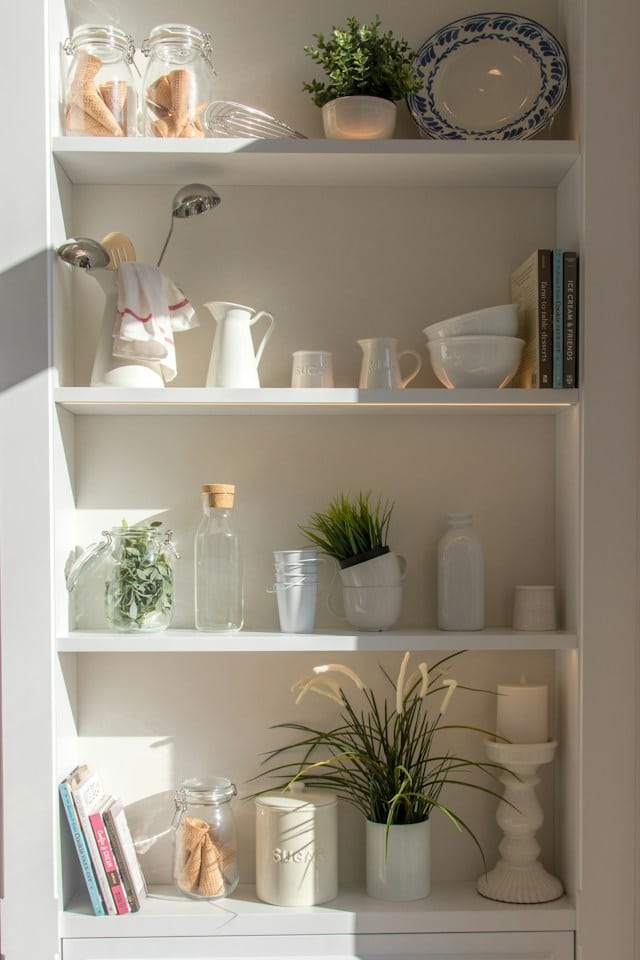Scandinavian living room design is all about simplicity, functionality, and minimalism. It’s about achieving a harmonious and balanced interior space that embodies a sense of calm and tranquility. This style is characterized by clean lines, muted colors, and an emphasis on natural materials. If you’re looking to transform your living area into a Scandinavian paradise, we are here to help. In this guide, we will explore various design ideas that will enhance your living space with a touch of Scandinavian charm.
1. White walls and Natural Light
Any Scandinavian interior design conversation would be incomplete without mentioning the importance of white walls and natural light. These two elements are foundational to this design style, underpinning the airy, open and tranquil aesthetic that it is known for.
Avez-vous vu cela : What’s the Best Approach for a Kitchen Backsplash that Doubles as an Interactive Recipe Display?
Scandinavian rooms are typically painted white to reflect as much natural light as possible. In the darker winter months, this helps to maximize the abundance of natural light. If your living room doesn’t have ample natural light, don’t worry. Add strategically placed mirrors to bounce light around the room and use sheer, light-diffusing curtains to mimic natural daylight.
2. Minimalist Furniture
Furniture in a Scandinavian styled room is generally minimalistic and functional. The focus here is on creating an uncluttered space that breathes.
Lire également : What Are the Best Strategies for Incorporating Vintage Elements into a Contemporary Home Design?
Choose pieces that boast clean lines and simple forms. Think low-profile sofas, armchairs with pared-down silhouettes, and coffee tables that blend simplicity with functionality. Materials such as wood, metal, and glass are commonly used. Upholstery, when used, is generally in neutral tones such as white, grey, and black, or muted pastels.
3. Scandinavian Color Palette
The color palette of a Scandinavian living room design is typically quite restricted. Neutral colors like white, grey, black, and beige take center stage in this style. These shades not only aid in creating a calm and peaceful ambiance but also help highlight the simplicity and functionality of the design.
However, it doesn’t mean your living room has to look dull. Accent colors can be introduced through accessories, art, and textiles. Pops of color like blues, pinks, and yellows can work well in a Scandinavian space when used sparingly and thoughtfully.
4. Use of Wood and Other Natural Materials
Wood is a dominant material in Scandinavian interior design, symbolizing a connection to nature. It’s often used for flooring, furniture, and occasionally even on ceilings or walls.
Opt for light-colored woods like beech, pine, or ash to keep the room feeling bright and spacious. Besides wood, material such as leather, wool, linen, and stone are also commonly used. These natural elements add texture and warmth, breaking the monotony of the often monochrome color palette.
5. Layered Lighting
Scandinavian design is big on lighting. In addition to maximizing natural light, multiple light sources are also typically used to create a warm, inviting atmosphere.
The style often incorporates three types of lighting: ambient, task, and accent. Ambient lighting provides overall illumination, often with ceiling fixtures or floor lamps. Task lighting is practical and usually comes in the form of desk lamps or reading lights. Accent lighting, such as candles or fairy lights, add an extra layer of comfort and coziness.
6. Simple Decorative Elements
Keeping with the minimalist theme, the decor in a Scandinavian living room should be kept to a minimal. Instead of having numerous small decorations, opt for a few statement pieces to add personality to the room.
Rugs, throws, and cushions can add warmth and texture to the room. Wall art, typically in black and white or muted colors, can add interest without overwhelming the space. Indoor plants are also a popular choice, as they add a touch of nature and can help to improve air quality.
Scandinavian design is about balance and harmony. It’s about creating a space that’s not only aesthetically pleasing but also functional and comfortable. By incorporating these design ideas, you can create a Scandinavian living room that is serene, inviting, and stylish.
7. Purity of Forms and Functionality
A key principle of Scandinavian design is the blend of form and function. Each piece in your living room should not only be aesthetically pleasing but also serve a purpose. Furniture should be simple yet functional, with a focus on usability and comfort. This design principle extends to everything from the coffee table to the storage units.
For instance, a sofa should provide a comfortable seating area, but it can also incorporate storage underneath. A coffee table isn’t just a surface to place your cup of coffee; it could also be a creative shelving solution. An armchair can be a cozy reading nook as well as an eye-catching design element.
Likewise, the decor should follow the same principle. A beautiful wall clock can serve as a timekeeper and a statement piece. A stylish floor lamp provides light while adding an elegant touch to the decor.
Always keep in mind that in Scandinavian living, less is more. Opt for pieces that offer maximum functionality with minimum fuss. By doing this, you not only maintain a clutter-free living space, but also stay true to the Scandinavian philosophy of practical living.
8. Incorporate Geometrical Patterns
The Scandinavian style isn’t devoid of patterns. But, when used, the patterns are usually simple, understated, and geometrical. They are used to add visual interest to the space without causing chaos or disrupting the overall harmony.
You can add these patterns through cushions on the sofa, a rug on the floor, or prints on the wall. Stripes, checks, and simple geometric shapes are common choices. Also, remember to stick to the color palette of your living room. A monochrome pattern, for instance, can create a bold statement without breaking the calm ambiance of the room.
Patterns can also be introduced subtly in the design of furniture. For example, a square grid pattern on a coffee table or a chevron pattern on a rug can add an extra layer of depth to the room’s design.
In conclusion, Scandinavian interior design is a style that champions simplicity, functionality, and a connection with nature. This guide provides you with key elements to consider when decorating your living room in this style. Remember, the aim is to create a balanced and harmonious space that exudes tranquility and comfort. Whether it’s choosing the right color palette or selecting the most functional furniture, every decision should be guided by these principles. By incorporating these ideas, you can achieve a stylish Scandinavian living room that is both beautiful and practical.











